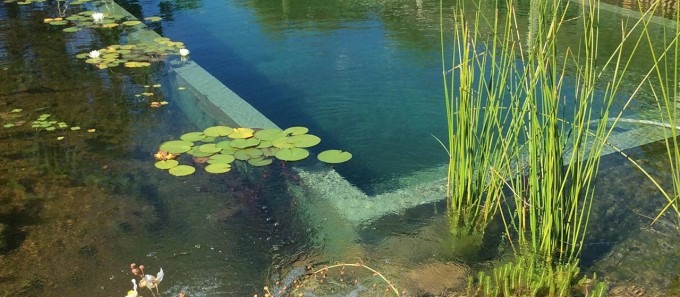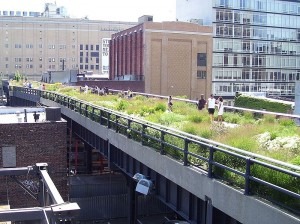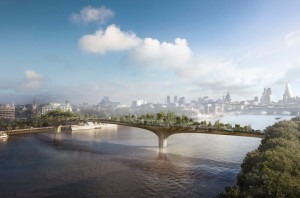In a previous article on Wellbeing Gardening I summarised the research regarding the strong links between health and well-being and nature, but more so the benefits of gardening.
That article helps to explain why amazing landscape design shifts are taking place all over the world. To highlight how far even some architects may have come, here’s a little story. About 15 years ago I interviewed a prominent architect regarding his opinion of the designs of the finalists in a national competition. One of the designs was a stunning glass structure that was literally full of plants. I can no longer remember all the details but I will never forget the architect’s response to that one. He sneered:
‘The building would be okay if it wasn’t for all that cabbage.’
Fifteen years later, everything is getting covered in ‘cabbage’!
We are greening cities from roofs to walls. We have guerrilla gardening and school gardening. We have water sensitive urban design. Obviously we are also responding to climate change and resource conservation needs but I think it is strongly tied together. Along with this there has also been a move generally towards more organic design.
Natural Swimming Pools
It seems to me that natural swimming pools emerged as one of the biggest design trends of 2014, but they have actually been around in Europe for decades. https://en.wikipedia.org/wiki/Garden_pond. In fact, Wayne Zwar from Natural Swimming Pools Australia says there are many public pools in Europe that are natural pools.
Natural swimming pools, by definition use no chemicals. Systems that use UV, ozone and copper/silver ion disinfection techniques are examples of non-natural methods and, by definition, are not natural swimming pools.

Natural swimming pools instead rely on biological processes to clean the water, called biofiltration. Aquatic plants oxygenate the water and, along with associated microorganisms, clean the water by continuously ‘gobbling up’ excess nutrients and impurities. The aquatic plants area (called the regeneration zone) is separated from the swimming area by a wall. The water looks natural, rather than the crystal clear of a chlorinated pool.

However, if the green tinge of a natural pool and the planted zone doesn’t appeal, there is another type of pool that provides the crystal clear look of the classic swimming pool but again relies on biological filters, except that the filters are tucked away out of sight.
Maintenance of natural swimming pools is less than that of chlorinated swimming pools but does require monitoring, a pump, and the usual skimming. The regeneration zone must be kept in good condition, after all, those plants and microorganisms are the cleaning system.
The second example given, where there is no regeneration zone but relies on running the water through a biological filtration system requires the least maintenance of all swimming pools.
Natural swimming pools must be constructed by a licenced builder and comply with Australian Standards.
Organic Landscapes
Organic landscape design is just as highly designed as any formal landscape, except that the landscapes look natural.
The organic redesign of former industrial sites has been happening for a long time, even the site of the Sydney 2000 Olympics at Homebush Bay was re-developed, as much as practicable at the time, with a very organic approach.

High Line Park in New York is one of my favourites. There were a lot of people involved in the redevelopment of these disused, elevated rail tracks, including the wonderful planting designer Piet Oudolf. Sections of the park are very organic in that remnants of the tracks have been left behind and allowed to develop a wild look, as though nature is reclaiming it.

Another large scale example is the London Garden Bridge, designed by Heatherwick Studio, but yet to be built. The Bridge will provide a pedestrian route between north and south London and features woodlands and meandering walkways.
The idea for the bridge was inspired by actress and campaigner, Joanna Lumley. A charity, Garden Bridge Trust, has been established to generate income for the building and ongoing maintenance of this wonderful initiative.
The Garden Bridge, like sections of High Line Park, really does look like nature is reclaiming the city, not a carefully designed structure and landscape, and that is the beauty of organic design.
Images
High Line Park: Beyond My Ken – Own work. Licensed under GFDL via Wikipedia – http://en.wikipedia.org/wiki/File:High_Line_20th_Street_looking_downtown.jpg#mediaviewer/File:High_Line_20th_Street_looking_downtown.jpg
London Garden Bridge: Heatherwick Studio, www.heatherwick.com
Frances Saunders is a horticulturist (B.App.Science), landscape designer and writer now based in Murray Bridge, South Australia after 25 years in Melbourne
Related Articles:
Managing Rats with IPM
“You dirty rat!” This phrase embodies the frustration many feel towards rats in the garden. These uninvited guests seem ever-present, scuttling along…
Mastering Essential Winter Gardening Skills
As the cold of winter sweep across the landscape, many gardeners in the South of Australia retreat indoors, awaiting the warmth of spring to resume…


